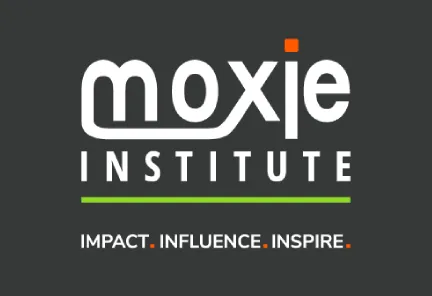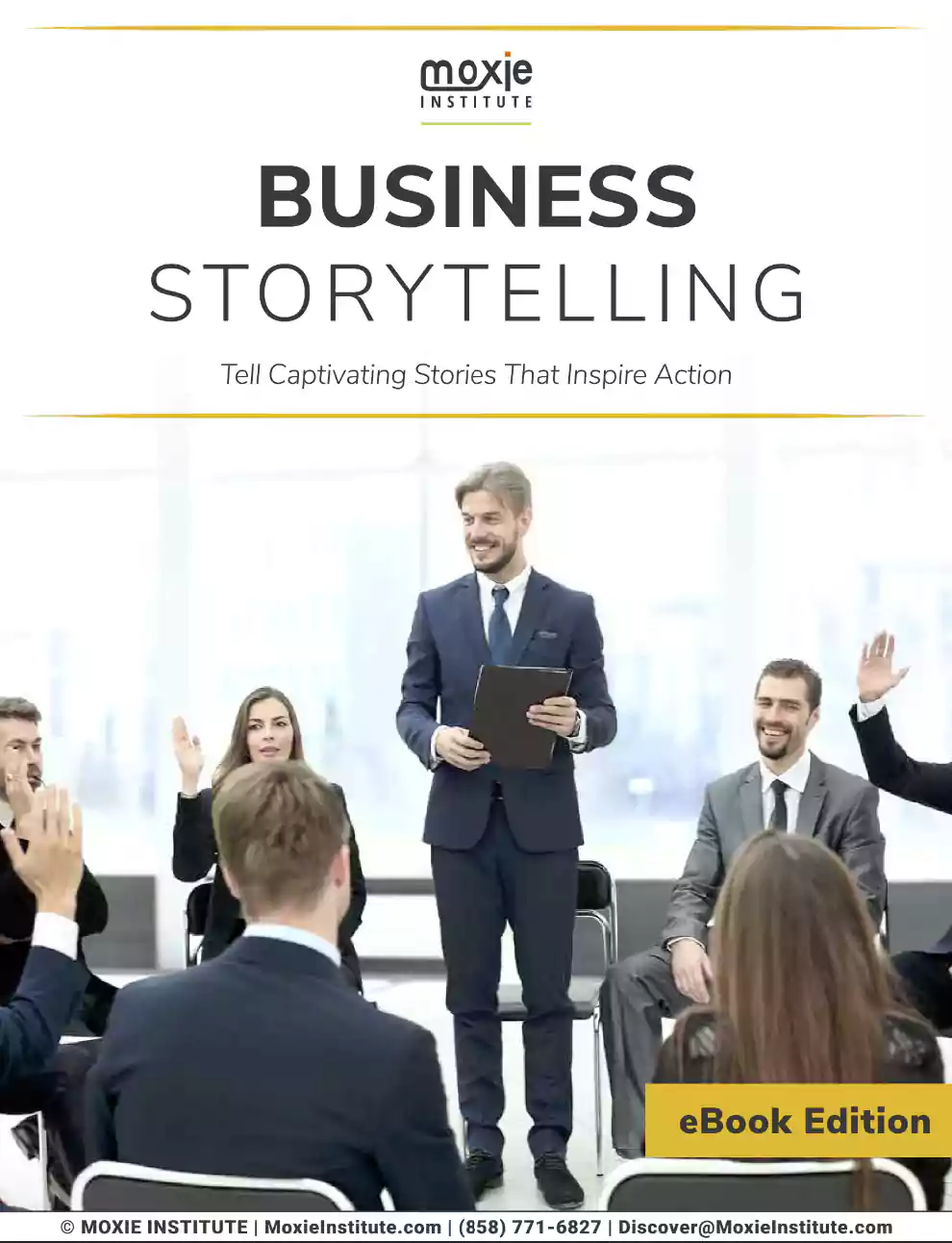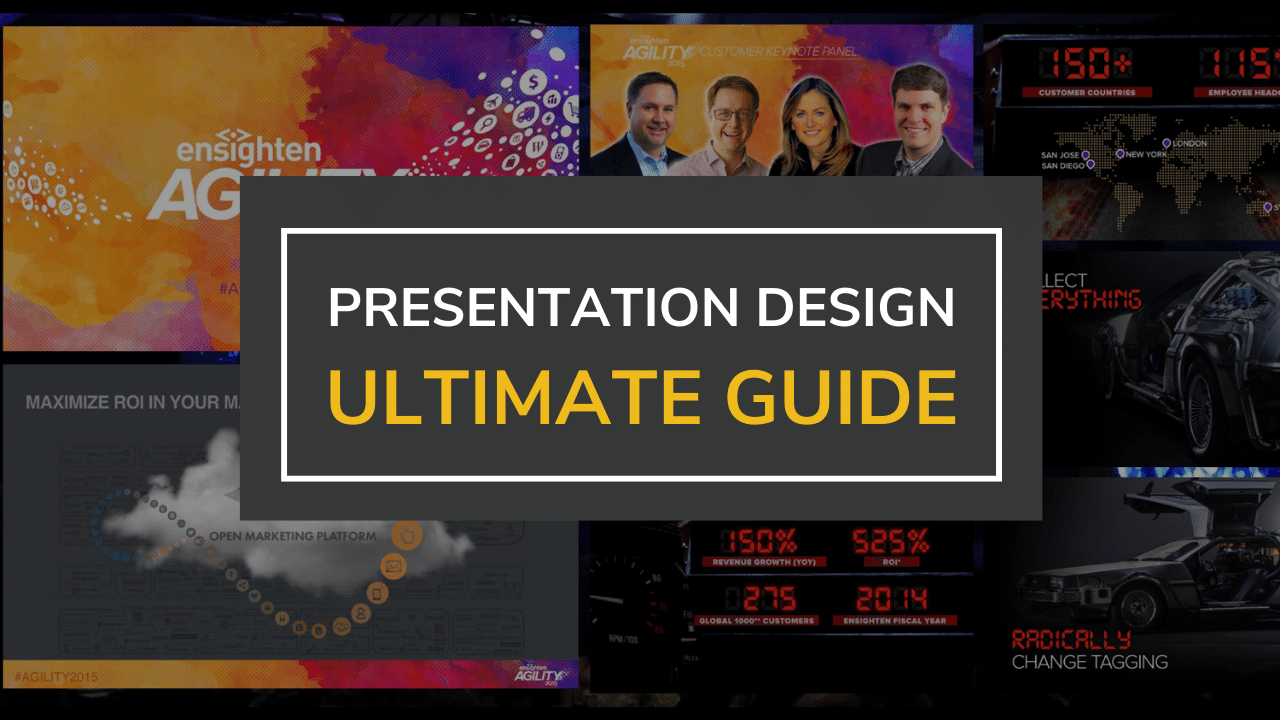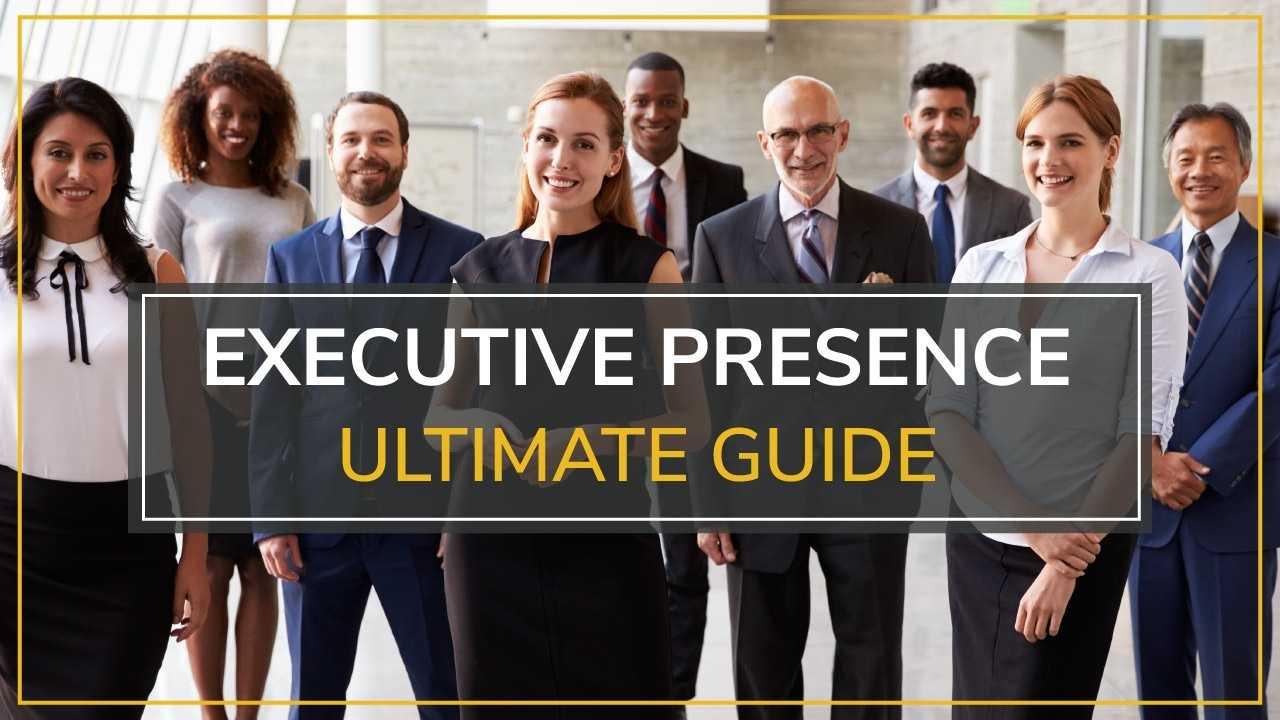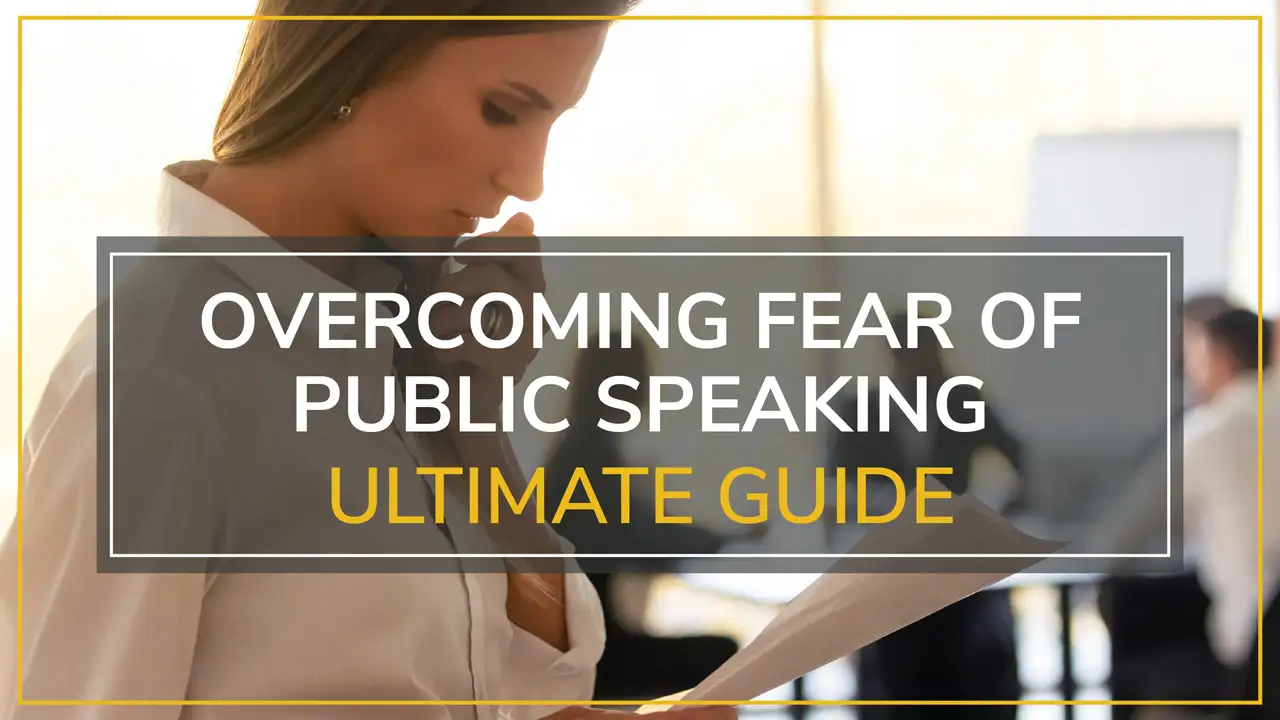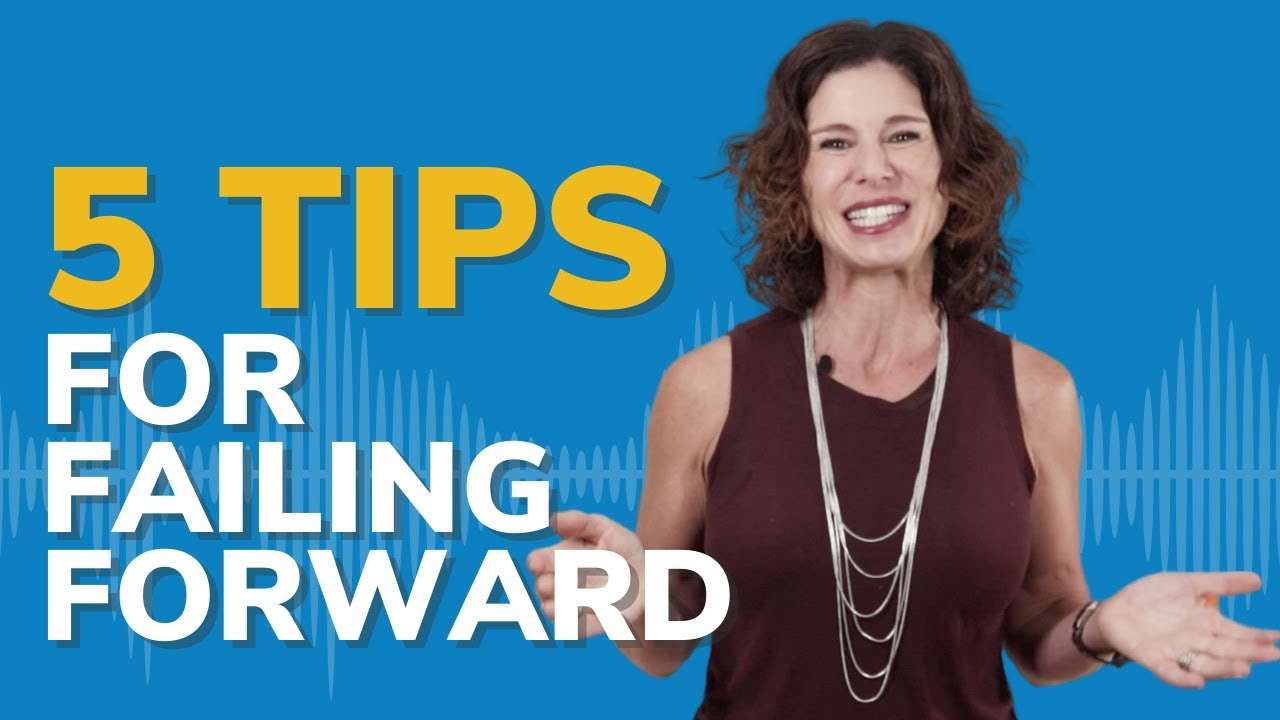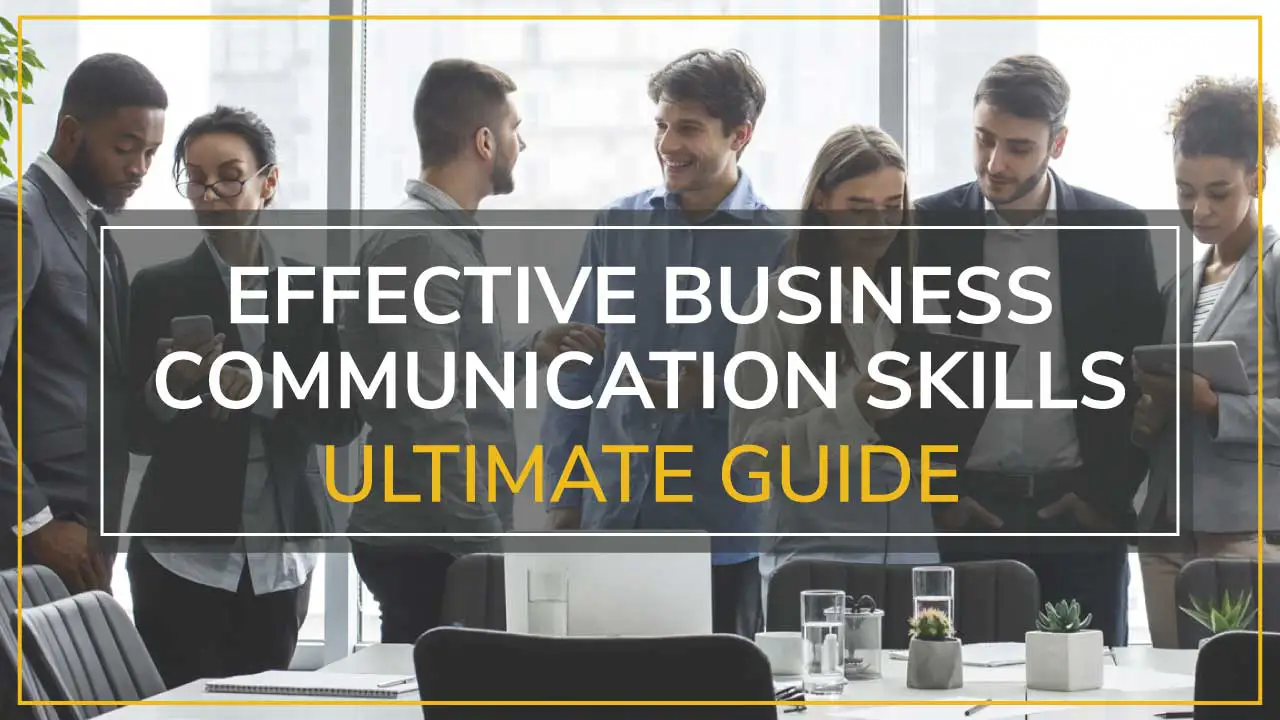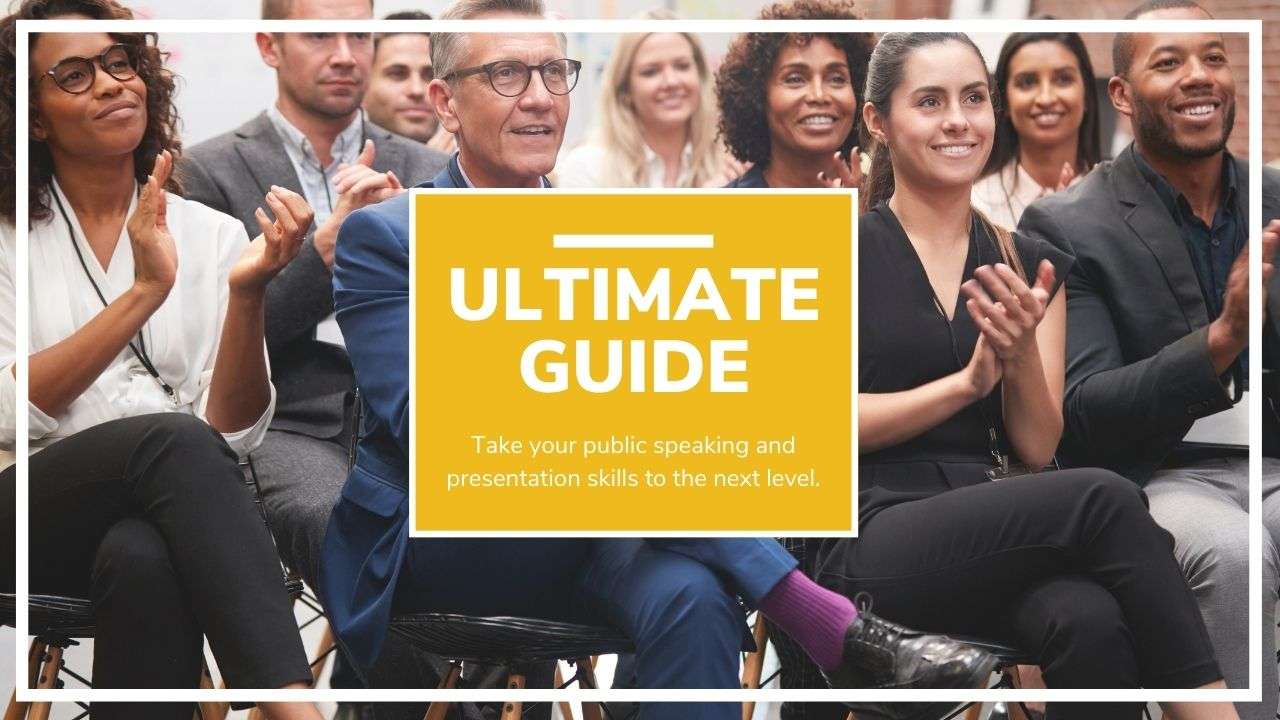Understanding the Psychology of Effective Speeches
Have you ever sat through a presentation that left you checking your watch every few minutes? Or perhaps you’ve experienced that rare talk that had you hanging on every word, completely losing track of time? The difference between these two experiences isn’t just about content—it’s about understanding the psychology behind what makes a speech truly effective.
Learning how to give a speech that resonates requires more than memorizing a few tips and tricks. It demands a fundamental understanding of how human minds engage with information, stories, and the person delivering them. At Moxie Institute, we’ve trained thousands of professionals across industries to transform ordinary presentations into extraordinary experiences by applying principles from neuroscience, performance psychology, and the art of storytelling.
The most compelling speakers aren’t born—they’re made through deliberate practice and understanding of audience psychology. By mastering specific techniques grounded in cognitive science, you can dramatically increase your impact and effectiveness every time you step up to speak.
Why Most Speeches Fail to Connect
Most speeches fail for a surprisingly simple reason: they’re designed from the speaker’s perspective, not the audience’s. In our experience coaching Fortune 500 executives and TED speakers, we’ve observed that even brilliant content can fall flat when presenters fail to bridge the gap between their expertise and their audience’s needs.
Research from the Journal of Applied Psychology shows that audiences typically forget up to 70% of presentation content within 24 hours. This forgetting curve steepens when speakers commit these common mistakes:
Information overload: Overwhelming audiences with excessive data
Lack of narrative structure: Presenting facts without a compelling storyline
Disconnection from audience priorities: Failing to address “what’s in it for them”
Abstract content without concrete examples: Making concepts difficult to grasp and remember
Monotonous delivery: Failing to vary vocal dynamics and energy
Understanding these pitfalls is your first step toward avoiding them in your own presentations. When you recognize the psychological barriers to audience engagement, you can strategically design your speech to overcome them.
The Neuroscience of Audience Engagement
To give a speech that truly captivates, it helps to understand what’s happening in your audience’s brains. Modern neuroscience has provided fascinating insights into how people process and remember information during presentations.
According to research from Stanford University’s Communication Department, our brains are wired to pay attention to specific types of stimuli:
Novelty: Our brains are naturally drawn to what’s new or unexpected
Relevance: Content that directly addresses our needs or challenges
Emotion: Information paired with emotional responses is more likely to be remembered
Contrast: Significant changes or comparisons that highlight differences
Concrete imagery: Specific, tangible examples over abstract concepts
When you understand these attention triggers, you can strategically incorporate them into your speech. For example, opening with an unexpected statistic, sharing a relevant personal story, or using vivid metaphors can activate multiple engagement pathways in your audience’s brains.
At Moxie Institute, we’ve found that speeches designed with these neurological principles in mind consistently achieve higher engagement scores and better audience retention of key messages. By leveraging the brain’s natural attention patterns, you transform how your audience receives and remembers your content.
Quick Takeaways:
Most speeches fail because they’re designed from the speaker’s perspective rather than the audience’s
Understanding cognitive principles like the forgetting curve helps you design more memorable content
The brain pays special attention to novelty, relevance, emotion, contrast, and concrete imagery
Applying neuroscience principles to your speech design dramatically increases engagement and retention
Essential Preparation Strategies
The most impactful speeches aren’t created in the final hours before delivery—they’re the result of strategic preparation that begins long before you step on stage. In our work with thousands of professionals, we’ve found that preparation isn’t just about having enough content; it’s about having the right content, structured effectively for your specific audience.
Audience Analysis: The Foundation of Every Great Speech
Before writing a single word of your speech, you need to deeply understand who you’ll be addressing. This goes beyond basic demographics to include psychographics—the values, attitudes, and concerns that drive your audience’s decisions and attention.
Here’s a systematic approach to audience analysis that we teach at Moxie Institute:
- Identify key stakeholders: Who are the primary and secondary audience members?
- Assess knowledge level: What do they already know about your topic?
- Determine audience needs: What problems are they trying to solve?
- Recognize potential objections: What might cause resistance to your message?
- Understand cultural context: Are there specific references or approaches that will resonate?
- Clarify desired outcomes: What do you want them to think, feel, or do after your speech?
One of our clients, a pharmaceutical executive, was preparing for a critical product launch presentation. Through careful audience analysis, she discovered that her audience of physicians wasn’t primarily concerned with efficacy data (which dominated her original presentation). Their actual concern was patient compliance with the treatment regimen. By redirecting her focus to address this specific need, her presentation resonated much more powerfully and led to significantly higher adoption rates.
Try It Yourself: Audience Empathy Mapping
Before your next presentation, create an audience empathy map by dividing a paper into four quadrants labeled:
- What is my audience thinking and feeling?
- What are they hearing from others?
- What do they see in their environment?
- What do they say and do publicly?
Fill in each quadrant based on your research and interactions. This exercise forces you to step into your audience’s perspective, revealing insights that will make your speech more relevant and compelling.
Strategic Message Development
Once you thoroughly understand your audience, it’s time to craft your core message. The most common mistake we see speakers make is trying to communicate too many ideas. Research from cognitive psychology shows that people typically remember only one to three key points from a presentation.
To develop a focused message that resonates:
- Distill your big idea: What’s the single most important concept you want to convey?
- Formulate a message statement: Create one clear sentence that captures your central point
- Test for memorability: Can someone repeat your message after hearing it once?
- Ensure relevance: Does your message directly address your audience’s needs?
- Add supporting points: Develop 2-3 key supporting ideas (not more)
For example, if you’re giving a speech on digital transformation, rather than covering dozens of technological trends, you might focus on this message statement: “Digital transformation isn’t about technology—it’s about reimagining customer experiences through a digital lens.” Then build your entire presentation around this central idea with 2-3 supporting points.
Creating a Compelling Structure
With your audience analysis complete and core message defined, the next step is structuring your content for maximum impact. Structure isn’t just about organization—it’s about creating a journey that guides your audience through your ideas in the most compelling way.
In our experience coaching executives for high-stakes presentations, we’ve found these structure frameworks to be particularly effective:
- Problem-Solution-Benefit: Present a challenge, offer your solution, and highlight the positive outcomes
- What-Why-How-What If: Explain the concept, why it matters, how to implement it, and the possibilities it creates
- Past-Present-Future: Show the history, current situation, and vision for what’s ahead
- Situation-Complication-Resolution: Establish context, introduce the challenge, and present your answer
The structure you choose should align with your specific purpose and audience expectations. For persuasive presentations, the Problem-Solution-Benefit framework often works best. For educational content, the What-Why-How-What If approach tends to be more effective.
When creating your structure, remember to build in strategic repetition of your key message. As the old communication adage goes: “Tell them what you’re going to tell them, tell them, then tell them what you told them.”
Speech Preparation Pitfalls to Avoid:
- Insufficient research: Failing to gather enough evidence and examples to support your claims
- Message overload: Trying to cover too many points in a single presentation
- Audience mismatch: Creating content that doesn’t align with audience knowledge or interests
- Weak structure: Organizing content in a way that feels random or difficult to follow
- Neglecting stories: Relying solely on data without compelling narratives to bring it to life
Quick Takeaways:
- Thorough audience analysis is the foundation of every successful speech
- Your core message should be focused enough that it can be expressed in one clear sentence
- Structure your presentation as a journey that guides your audience through your ideas
- Choose a framework (Problem-Solution-Benefit, etc.) that matches your specific purpose
- Strategic repetition of key points increases message retention
Crafting a Memorable Opening and Closing

The beginning and end of your speech have a disproportionate impact on your audience’s perception and retention. Research in cognitive psychology shows that people remember the first and last parts of an experience most vividly—a phenomenon known as the primacy and recency effect. When learning how to give a speech that resonates, mastering your opening and closing is essential.
Attention-Grabbing Techniques That Actually Work
You have approximately 30 seconds to capture your audience’s attention before they decide whether to fully engage with your presentation. Here are proven opening techniques we’ve refined through working with thousands of speakers:
- The Surprising Statistic: Start with a number that challenges assumptions or highlights the importance of your topic
Example: “75% of employees would rather give a presentation to a room full of strangers than ask their boss for a raise. Public speaking anxiety is real—but today, we’re going to conquer it together.” - The Provocative Question: Pose a thought-provoking question that creates curiosity
Example: “What if the most valuable skill for your career advancement isn’t what you think it is, but rather how effectively you communicate your ideas?” - The Personal Story: Share a brief, relevant personal experience that connects to your message
Example: “Three years ago, I froze completely during a presentation to our executive team. That humiliating moment became the catalyst for transforming my approach to public speaking—and what I discovered changed everything.” - The Powerful Contrast: Highlight a stark difference between two scenarios
Example: “Imagine two equally qualified candidates interviewing for your dream job. One speaks with hesitation and uncertainty; the other with clarity and conviction. Who gets the offer? Today, we’ll ensure you’re the latter.” - The Intriguing Scenario: Paint a picture that pulls the audience into your topic
Example: “It’s your moment. The spotlight finds you as you step to the podium. Five hundred faces turn in your direction, waiting. What happens next will determine whether you’re forgotten by lunch—or remembered for months to come.”
In our work with executive clients, we’ve found that openings incorporating elements of both emotional connection and relevance to audience needs consistently outperform more traditional introductions. The key is authenticity—even the most compelling technique falls flat if it feels forced or disconnected from your message.
The Art of the Powerful Conclusion
Many speakers put all their energy into their opening, only to let their conclusion fizzle out with a weak “thank you” or “any questions?” This wastes a critical opportunity to cement your message in your audience’s minds. Your conclusion should feel like the powerful final chord of a symphony—not an awkward fade-out.
Here are five conclusion techniques that leave a lasting impression:
- The Call to Action: Clearly state what you want your audience to do
Example: “I challenge each of you to identify the one presentation that scares you most, and volunteer to give it within the next 30 days. That’s how growth happens.” - The Full-Circle Reference: Connect back to your opening to create a sense of completion
Example: “Remember that statistic I shared at the beginning? 75% of employees fear public speaking more than asking for a raise. You now have the tools to join the confident 25%—and to help others do the same.” - The Inspirational Vision: Paint a picture of a better future that’s possible through your ideas
Example: “Imagine walking into any room, facing any audience, with complete confidence in your ability to communicate your ideas clearly and persuasively. That’s not just a dream—it’s your new reality.” - The Powerful Quote: End with a memorable statement that encapsulates your message
Example: “As communication expert Neil Postman once said, ‘The penalty for refusing to participate in politics is being governed by your inferiors.’ I would add: The penalty for avoiding public speaking is having your best ideas go unheard.” - The Provocative Thought: Leave your audience with something to ponder
Example: “The greatest speeches in history weren’t given by the most naturally gifted orators, but by those with the most compelling messages and the determination to share them effectively. Which will you be?”
When crafting your conclusion, ensure it reinforces your core message and creates a sense of resolution. A strong conclusion should feel both satisfying and motivating—giving closure to your presentation while inspiring action or deeper thinking.
Pro Tip: Never end with “Thank you” or “That’s all I have.” These weak closings dilute your message. Instead, make your final sentence your strongest point, then pause, and only after that momentary silence acknowledge the audience with a simple “thank you.”
Quick Takeaways:
- Your opening and closing have disproportionate impact due to the primacy and recency effect
- You have approximately 30 seconds to capture your audience’s attention
- Effective openings often incorporate surprise, questions, stories, contrast, or scenarios
- Strong conclusions include calls to action, full-circle references, vision statements, quotes, or provocative thoughts
- Never end with a weak “thank you” or “that’s all”—make your final sentence your strongest point
Mastering Delivery Techniques
Even the most brilliantly crafted speech can fall flat without effective delivery. Public speaking tips often focus exclusively on content development, but how you deliver your message accounts for a significant portion of your impact. At Moxie Institute, we’ve found that mastering specific physical and vocal techniques can transform even nervous speakers into compelling presenters.
Vocal Dynamics: The Secret Weapon of Great Speakers
Your voice is an instrument, and like any instrument, it can be played with variety and nuance to create different effects. Many speakers use only a fraction of their vocal range, resulting in monotonous delivery that lulls audiences into disengagement.
Research from the Journal of Voice indicates that speakers with varied vocal patterns hold attention better and are perceived as more knowledgeable and confident. Here’s how to enhance your vocal dynamics:
- Pace Variation: Strategically speed up or slow down to emphasize different points
- Speed up slightly during straightforward information
- Slow down significantly when delivering key insights
- Pause completely before and after your most important points
- Volume Control: Modulate your volume to create emphasis and interest
- Increase volume slightly to emphasize key points (don’t shout)
- Occasionally drop to a near-whisper to draw the audience in
- Maintain consistent projection so even the back row can hear clearly
- Pitch Modulation: Vary the highness or lowness of your tone
- Use a slightly higher pitch when expressing excitement or asking questions
- Drop to a lower pitch for authoritative statements or serious points
- Avoid ending sentences with an upward inflection (which sounds like a question)
- Strategic Pauses: The powerful use of silence
- Pause before key points to create anticipation
- Pause after important statements to allow them to sink in
- Use pauses to transition between major sections of your talk
In our coaching sessions, we use a technique called “vocal mapping” where speakers mark their manuscripts with specific vocal cues—highlighting places to slow down, speed up, pause, or emphasize. This conscious planning of vocal variety dramatically enhances audience engagement.
Body Language That Reinforces Your Message
Nonverbal communication accounts for a significant portion of your message’s impact. Your body can either reinforce or contradict what you’re saying verbally. Based on our experience training executives for high-stakes presentations, here are the most important body language elements to master:
- Purposeful Movement: How and when you move across the stage
- Move with intention rather than random pacing
- Change positions when transitioning to new points
- Step toward the audience to create connection during important moments
- Step back slightly during more conceptual or complex points
- Gesture Authenticity: Using your hands effectively
- Allow gestures to emerge naturally from your content
- Use open palm gestures to build trust and connection
- Create “gesture containers” for complex ideas (showing their size or relationship)
- Avoid repetitive or nervous gestures (jingling coins, clicking pens)
- Eye Contact: Creating connection with your audience
- Focus on one person at a time for a complete thought (3-5 seconds)
- Cover all sections of the room systematically
- For virtual presentations, look directly at the camera lens
- Use the “lighthouse technique”—methodically scanning the room while making specific connections
- Facial Expression: Aligning your face with your message
- Allow your face to reflect the emotion of your content
- Smile authentically when appropriate (not constantly)
- Avoid the “presentation mask”—the frozen, serious expression many speakers adopt
One of our clients, a naturally reserved financial executive, struggled with appearing too stiff during presentations. Through deliberate practice of these techniques, particularly focused on purposeful movement and gesture authenticity, she transformed her platform presence. Her leadership effectiveness scores increased by 27% after implementing these changes.
Managing Nervous Energy Effectively
Nearly everyone experiences some form of public speaking anxiety. The difference between polished and amateur speakers isn’t the absence of nerves—it’s how they channel that nervous energy.
According to research from the American Psychological Association, moderate arousal actually improves performance when reframed properly. Here’s our approach to managing public speaking anxiety:
- Pre-Speech Physiological Techniques:
- The 4-7-8 Breathing Method: Inhale for 4 counts, hold for 7, exhale for 8
- Progressive Muscle Relaxation: Systematically tense and release muscle groups
- The “Power Pose”: Adopt an expansive posture for 2 minutes before speaking
- Cognitive Reframing Strategies:
- Convert “I’m so nervous” to “I’m energized and ready”
- Replace “They’ll judge me” with “They’re here to learn from me”
- Shift from “I might fail” to “This is an opportunity to serve my audience”
- Focus Redirection:
- Concentrate on serving your audience rather than on yourself
- Focus on your message, not on your performance
- Direct attention to connection rather than perfection
- Physical Energy Management:
- Channel nervous energy into purposeful movement and vocal emphasis
- Ground yourself physically by feeling your feet firmly on the floor
- Use the “palm press” technique (pressing palms together firmly) to center yourself
One particularly effective technique we teach at Moxie Institute is the “3-3-3 Grounding Method.” When anxiety spikes, identify three things you can see, three things you can hear, and three parts of your body in contact with something else. This simple mindfulness exercise interrupts the anxiety cycle and brings you back to the present moment.
Common Delivery Mistakes to Avoid:
- The Statue: Standing completely still with rigid posture
- The Pacer: Moving aimlessly without purpose
- The Monotone: Using the same vocal pattern throughout
- The Rush: Speaking too quickly due to nervousness
- The Script-Reader: Failing to make eye contact due to over-reliance on notes
Quick Takeaways:
- Vocal dynamics (pace, volume, pitch, pauses) significantly impact audience engagement
- Purposeful movement, authentic gestures, and consistent eye contact reinforce your message
- Everyone experiences public speaking anxiety—the key is channeling it productively
- Simple physiological and cognitive techniques can transform nervousness into positive energy
- Focus on serving your audience rather than on your own performance
Storytelling for Maximum Impact

In our decades of experience training speakers, we’ve found that nothing captivates an audience more consistently than effective storytelling. Whether you’re delivering a technical presentation, a sales pitch, or a keynote address, strategic storytelling transforms how your audience receives and remembers your message.
Why Stories Are the Ultimate Persuasion Tool
Understanding why stories work requires looking at both neuroscience and psychology. When we hear factual information, it activates the language processing parts of our brain. But when we experience a story, something remarkable happens: our brains react as if we’re actually living the events described.
Research from Princeton University demonstrates that during effective storytelling, the speaker’s and listeners’ brains actually synchronize in a phenomenon called “neural coupling.” This creates several powerful effects:
- Increased Retention: Information delivered through stories is remembered up to 22 times more effectively than facts alone
- Emotional Connection: Stories trigger the release of oxytocin, creating empathy and trust
- Reduced Resistance: Stories bypass logical defenses that might otherwise reject your ideas
- Universal Understanding: Complex concepts become accessible through narrative frameworks
- Motivation to Act: Well-crafted stories inspire behavioral change more effectively than rational arguments
In practical terms, this means that incorporating strategic storytelling into your speech isn’t just a stylistic choice—it’s a neurological necessity if you want your message to stick.
Pro Tip: For every key point in your presentation, develop a supporting story that brings it to life. Even in technical presentations, brief narrative examples dramatically increase comprehension and retention.
The Hero’s Journey Framework for Business Presentations
While there are many storytelling frameworks, we’ve found the adapted Hero’s Journey to be particularly effective for business and professional presentations. This simplified version of Joseph Campbell’s classic structure can be applied to case studies, personal experiences, or hypothetical scenarios:
- The Ordinary World: Establish the status quo situation
- The Challenge: Introduce the problem or opportunity that disrupted normalcy
- The Resistance: Show the initial reluctance or obstacles faced
- The Guide: Reveal the mentor, insight, or solution that provided direction
- The Transformation: Describe the journey of implementing the solution
- The Victory: Share the positive results and outcomes
- The New Normal: Explain how things are different now and the lessons learned
For example, rather than simply stating statistics about a successful product launch, you might structure it as a journey: “Our team was comfortable with our traditional approach (ordinary world), until customer feedback revealed a critical gap in the market (challenge). Initially, we hesitated to pivot our entire strategy (resistance), but our customer research provided clear direction (guide). We undertook a three-month development sprint (transformation), resulting in a product that increased sales by 45% (victory) and completely changed how we approach innovation (new normal).”
This framework works because it follows the natural psychological patterns that humans are wired to respond to. It creates tension, resolution, and meaning—three elements that dramatically enhance engagement.
Try It Yourself: Story Mining Exercise
Great storytellers aren’t born—they’re observant. Start collecting stories systematically with this exercise:
- Create a “story bank” document or note on your phone
- Each day for one week, write down at least one incident, observation, or interaction that:
- Taught you something valuable
- Surprised you or challenged your assumptions
- Illustrated an important principle or concept
- Created a memorable emotional response
- For each story, note:
- The key point it could illustrate in a presentation
- The emotional tone of the story (inspirational, cautionary, humorous)
- A potential one-sentence summary
After a week, you’ll have at least seven stories to draw from for future presentations. Continue this practice, and you’ll develop a rich repository of authentic material that will make your speeches more engaging and memorable.
Quick Takeaways:
- Stories create “neural coupling” between speaker and audience, synchronizing brain activity
- Information delivered through stories is remembered up to 22 times more effectively than facts alone
- The adapted Hero’s Journey framework provides a powerful structure for business narratives
- Creating a “story bank” helps you systematically collect material for future presentations
- Every key point in your presentation should be supported by a relevant story or example
Handling Challenging Situations
Even the most prepared speakers sometimes face unexpected challenges. What separates exceptional communicators from average ones is not the absence of difficulties, but how skillfully they navigate them. Based on our experience coaching thousands of professionals through high-stakes presentations, we’ve developed proven strategies for managing the most common challenging situations.
Managing Difficult Questions with Confidence
Question-and-answer sessions can be either the most valuable part of your presentation or the moment where everything falls apart. The difference often comes down to how prepared you are to handle tough questions. Here’s how to master this critical skill:
- Anticipate and Prepare: Before your presentation, brainstorm the 10 most challenging questions you might receive—especially those you hope no one will ask. Prepare concise, honest answers for each.
- Use the “Bridge” Technique: When faced with a difficult question, acknowledge it briefly, then bridge to a related point you’re more comfortable addressing.
Example: “That’s an important question about our past performance. While those results were disappointing, I’d like to focus on the three significant changes we’ve implemented that are already showing positive results…” - Deploy the “Feel, Felt, Found” Method: For hostile or emotionally charged questions, this three-part response shows empathy while guiding the questioner to a new perspective.
Example: “I understand how you might feel concerned about this approach. Others have felt the same way initially. What we’ve found, however, is that once implemented, the results consistently exceed expectations, as demonstrated by…” - Master the Art of Redirection: Sometimes the most appropriate response is bringing the conversation back to your key message.
Example: “That’s getting into an area outside today’s scope, but it reminds me of our central challenge, which is…” - Handle “I Don’t Know” Gracefully: When you truly don’t have the answer, admit it confidently, then explain how you’ll follow up.
Example: “That’s an excellent question that I don’t have specific data for right now. I’ll research that and email everyone the answer by tomorrow. What I can tell you today is…”
In our experience training executives for media appearances and investor presentations, we’ve found that confidence during Q&A comes from thorough preparation. One Fortune 500 CFO we worked with created a comprehensive “question bank” before quarterly earnings calls, with prepared responses for over 50 potential questions. This preparation allowed him to respond thoughtfully even to unexpected challenges.
Recovering from Mistakes Gracefully
Even the most polished speakers occasionally misspeak, lose their place, or experience technical difficulties. What matters isn’t the mistake itself but how you recover from it. Here’s our framework for turning potential disasters into moments of authentic connection:
- Acknowledge Briefly: Don’t pretend nothing happened if the mistake was obvious. A quick, confident acknowledgment without over-apologizing keeps you in control.
Example: “Let me restart that point more clearly” or “Let’s try that slide again.” - Use Self-Deprecating Humor (Cautiously): A light touch can defuse tension, but only if it feels authentic and doesn’t undermine your authority.
Example: “And that’s how not to pronounce that term. Let me try again.” - Reframe as a Learning Moment: Sometimes a mistake can actually become valuable content.
Example: “Actually, this technology issue perfectly illustrates the challenge I’m describing. Let’s use this as a real-time example…” - Focus Forward, Not Backward: Don’t dwell on the error—move confidently to your next point.
Example: “With that clarified, let’s move to the most important implication…” - Remember the “Audience Amnesia Principle”: Audiences forget mistakes much faster than speakers do, especially when the recovery is smooth.
One of our clients, a technology executive, experienced complete slide deck failure during a major product launch. Rather than panicking, she acknowledged the issue briefly, then said, “This gives me the opportunity to share our new product with you directly, without visual distractions.” She proceeded to deliver a compelling presentation without slides, later receiving feedback that her authentic handling of the situation actually enhanced her credibility.
Common Challenge Scenarios: Practical Solutions
Challenge | Solution |
Hostile questioner | Use the “feel, felt, found” method; maintain calm, open body language |
Technical failure | Have a backup plan (printed notes, alternate examples) that doesn’t rely on technology |
Mind going blank | Keep water nearby—taking a sip provides a natural pause to collect thoughts |
Time cut short | Prepare a “modular” presentation with sections that can be removed while maintaining coherence |
Low energy audience | Incorporate brief pair discussions or simple polls to increase engagement |
Interruptions | Acknowledge politely but firmly maintain control with phrases like “I’ll address that shortly” |
Quick Takeaways:
- Anticipate difficult questions and prepare concise answers in advance
- Use techniques like “bridging” and “feel, felt, found” to handle challenging questions
- When mistakes happen, acknowledge briefly without over-apologizing, then move forward confidently
- Audiences forget mistakes much more quickly than speakers do, especially with smooth recovery
- Having backup plans for common challenges gives you confidence in any situation
Speech Technology and Visual Support
The thoughtful use of visual aids and technology can significantly enhance your presentation’s impact. However, when used poorly, these same tools can distract from your message and diminish your effectiveness. At Moxie Institute, we’ve developed specific guidelines for integrating technology and visuals in ways that complement rather than compete with your spoken content.
Creating Slides That Enhance (Not Replace) Your Message
Presentation slides are tools for visual enhancement, not speaker replacement. The most common mistake we see in public speaking training is creating slides that function as teleprompters rather than visual aids. This approach invariably leads to “death by PowerPoint”—where audiences read ahead of you, mentally disconnect, and lose engagement with your message.
Research from the Journal of Experimental Psychology confirms that when speakers present text-heavy slides, audience comprehension and retention actually decrease due to cognitive overload. The brain cannot efficiently process someone speaking while simultaneously reading different text.
Follow these evidence-based principles for creating slides that enhance your presentation:
- The 6×6 Rule: No more than 6 bullet points per slide, no more than 6 words per bullet
- The Billboard Test: Each slide should be comprehensible in 3 seconds, like a billboard on a highway
- The Visual Dominance Principle: Use high-quality images that occupy at least 50% of each slide
- The Consistency Framework: Maintain uniform fonts, colors, and styling throughout
- The Data Visualization Standard: Transform complex data into clear, simple charts with one insight per visual
In our work with technical and data-driven presenters, we often recommend the “headline method” for slides. Instead of vague titles like “Q3 Results,” use complete sentences that convey the key insight: “Q3 Results Exceeded Targets in All Regions.” This approach guides your audience to the most important takeaway from each slide.
Pro Tip: Design your presentation to work without slides first, then add visual support. This ensures you maintain control of your message rather than becoming dependent on your visuals.
Virtual Presentation Adaptations
The dramatic shift toward virtual presentations has created new challenges and opportunities for speakers. Virtual environments require specific adaptations to maintain audience engagement and message clarity. Based on our experience coaching thousands of professionals for virtual presentations, here are the most effective strategies:
- Technical Environment Optimization:
- Position your camera at eye level for the most flattering and authoritative angle
- Use proper lighting (positioning a light source behind your camera)
- Select a professional, distraction-free background
- Connect via ethernet rather than WiFi when possible for stability
- Use a high-quality external microphone for clear audio
- Engagement Techniques for Virtual Settings:
- Increase your energy level by approximately 30% compared to in-person delivery
- Use more frequent audience interaction (polls, chat, questions) every 3-5 minutes
- Incorporate stronger vocal variety to compensate for reduced visual cues
- Maintain “digital eye contact” by looking directly at the camera lens
- Use the “speaker square” technique: position your notes, camera, and participant view in a tight square to minimize eye movement
- Virtual-Specific Visual Support:
- Simplify slides even further than for in-person presentations
- Use more animation to control information flow (preventing audience read-ahead)
- Consider integrated tools like virtual whiteboards for dynamic content creation
- Share physical objects or demonstrations when relevant to create visual interest
- Utilize on-screen annotations to highlight key points in real-time
- Platform Mastery:
- Thoroughly learn your specific presentation platform’s capabilities before presenting
- Practice managing technical elements while speaking until it becomes seamless
- Prepare for common technical issues with specific backup plans
- Consider having a producer or technical support person for complex presentations
- Test all interactive elements with a small group before your actual presentation
One executive client was delivering a critical virtual board presentation during a funding round. By implementing these specific adaptations—particularly improving his technical setup and increasing audience interaction—he successfully secured $12 million in funding. As he later noted, “The technology and environment changes were relatively simple, but they dramatically improved how my message was received.”
Speech Technology Mistakes to Avoid:
- Slide Saturation: Creating too many slides (aim for 1 slide per 2-3 minutes of speaking)
- Technology Dependence: Being unable to deliver your message if technology fails
- Animation Overload: Using distracting transitions and effects that serve no purpose
- Font Failures: Using text too small to read from the back of the room (minimum 30pt font)
- Cognitive Dissonance: Speaking about one topic while showing visuals about another
Quick Takeaways:
- Slides should enhance, not replace, your spoken message
- Follow the 6×6 rule and design slides to pass the “billboard test”
- Virtual presentations require specific adaptations in technical setup, energy, and engagement
- Increase audience interaction every 3-5 minutes in virtual settings to maintain attention
- Master your presentation platform’s capabilities before delivering important virtual presentations
Pre-Speech Mental Preparation
Your mental state in the hours and minutes before your presentation dramatically impacts your performance. Even the most experienced speakers can sabotage themselves with poor mental preparation. At Moxie Institute, we combine techniques from performance psychology, neuroscience, and professional acting to create pre-speech rituals that optimize your mental state for peak performance.
Performance Psychology Techniques for Peak Performance
Elite athletes and performers use specific psychological techniques to access their best capabilities under pressure. These same methods can transform your speaking performance when applied consistently. Based on our work with high-stakes presenters, these are the most effective pre-speech mental preparation techniques:
- Optimal Arousal Calibration: Finding your ideal energy level
- Most speakers perform best at a moderate arousal level—energized but not anxious
- Identify your personal “zone of optimal performance” through experimentation
- Use energizing techniques (physical movement, upbeat music) if you tend toward low energy
- Use calming techniques (deep breathing, progressive relaxation) if you tend toward anxiety
- Confidence Anchoring: Creating a trigger for your best state
- Recall a time when you communicated with complete confidence
- Fully re-experience that memory, noting your posture, breathing, and internal state
- Create a physical “anchor” by pressing your thumb and finger together while in this state
- Before speaking, use this same physical gesture to rapidly access that confident state
- Mental Rehearsal: Visualizing successful delivery
- Practice detailed mental visualization of your entire presentation
- Imagine delivering with confidence, connecting with the audience, and handling questions
- Include sensory details—what you’ll see, hear, and feel throughout
- Visualize successfully managing potential challenges (technology issues, difficult questions)
- Cognitive Reframing: Transforming limiting thoughts
- Identify negative self-talk (“I always get nervous,” “They’ll think I’m not qualified”)
- Challenge these thoughts with evidence of past successes
- Replace with empowering alternatives (“I’ve prepared thoroughly,” “I have valuable insights to share”)
- Focus on serving your audience rather than on your performance
- The 20-Minute Performance Zone Routine: A systematic pre-speech ritual
- 20 minutes before: Complete final review of notes and key points
- 15 minutes before: Physical warm-up (facial exercises, stretching, power poses)
- 10 minutes before: Vocal warm-up (articulation exercises, vocal range practice)
- 5 minutes before: Centering meditation and confidence anchoring
- 1 minute before: Deep breathing and intention setting
We worked with an executive who consistently experienced extreme anxiety before board presentations despite her expertise. By implementing the confidence anchoring technique and cognitive reframing practices, she transformed her pre-speech experience. After three months of consistent practice, her self-assessed anxiety levels decreased from 9/10 to 3/10, and her presentation effectiveness ratings increased significantly.
Visualization and Anchoring Methods
Visualization is particularly powerful for overcoming public speaking anxiety and optimizing performance. When done correctly, mental rehearsal activates many of the same neural pathways as actual practice, creating a familiarity that reduces stress and improves execution.
Here’s our step-by-step guide to effective visualization for speakers:
- Create the optimal environment: Find a quiet space where you won’t be disturbed
- Enter a relaxed state: Use deep breathing to calm your mind and body
- Build a complete scenario: Imagine the entire presentation environment in detail
- Engage all senses: See the audience, hear your confident voice, feel your gestures
- Experience success: Visualize audience engagement and positive responses
- Practice recovery: Imagine successfully handling potential challenges
- Reinforce with anchoring: Create a physical trigger associated with this successful state
For maximum effectiveness, practice this visualization daily for at least a week before your presentation. Each session should last 5-10 minutes and include increasingly detailed mental imagery.
Try It Yourself: The 5-4-3-2-1 Grounding Technique
If you experience acute nervousness immediately before speaking, this quick grounding exercise can help center you in the present moment:
- Acknowledge 5 things you can see in the room
- Notice 4 things you can physically feel (your feet on the floor, your hands on the podium)
- Recognize 3 things you can hear
- Identify 2 things you can smell (or two smells you like)
- Note 1 thing you can taste (or your favorite taste)
This simple mindfulness exercise interrupts anxiety patterns by bringing your awareness fully into the present moment, reducing the overthinking that often accompanies public speaking anxiety.
Pre-Speech Mental Preparation Pitfalls:
- The Cramming Trap: Trying to memorize or review too much content right before speaking
- The Technology Spiral: Checking and rechecking slides until the last minute
- The Catastrophic Thinking Cycle: Imagining worst-case scenarios without solution visualization
- The Comparison Complex: Comparing yourself to other speakers rather than focusing on your message
- The Perfection Paralysis: Setting an unrealistic standard of flawless delivery
Quick Takeaways:
- Your mental state before speaking significantly impacts your performance
- Performance psychology techniques like visualization, anchoring, and reframing create confidence
- The 20-Minute Performance Zone Routine creates an optimal mental state before speaking
- Regular visualization practice activates the same neural pathways as actual practice
- The 5-4-3-2-1 Grounding Technique can quickly interrupt anxiety patterns
Post-Speech Growth Strategies
The moments after your presentation provide valuable opportunities for growth that most speakers miss. Rather than merely feeling relief that it’s over, exceptional communicators use structured reflection and feedback methods to continuously improve. At Moxie Institute, we’ve found that implementing systematic post-speech strategies can accelerate communication skill development dramatically.
Effective Self-Assessment Methods
Self-assessment is the first step in post-presentation improvement. Without objective self-reflection, you’re likely to either be overly critical or miss significant improvement opportunities. Here’s our framework for effective self-assessment:
- The 24-Hour Rule: Wait at least 24 hours before conducting a formal self-assessment to gain emotional distance
- Balanced Reflection Protocol: Use these specific questions to avoid negativity bias:
- What were three specific things that went well?
- What was one moment where I felt most connected with the audience?
- What was one aspect that could be improved next time?
- What would I do differently if giving this presentation again?
- What did I learn that I can apply to future presentations?
- Video Review Method: Record your presentations whenever possible and use this structured approach:
- First viewing: Watch without judgment, just to get comfortable seeing yourself
- Second viewing: Focus only on positive aspects (effective gestures, strong statements)
- Third viewing: Identify specific improvement opportunities with actionable solutions
- Create a “focus statement” for your next presentation based on your insights
- The Speaker’s Diary: Maintain a cumulative log of insights and improvements
- Document key learnings after each presentation
- Track recurring challenges and successful strategies
- Note audience reactions to specific techniques or content
- Create a personal “best practices” section based on what works consistently for you
We’ve found that speakers who implement this structured self-assessment process improve significantly faster than those who rely on general impressions or focus exclusively on what went wrong. The key is balancing honest assessment with recognition of strengths and specific improvement strategies.
Continuous Improvement Framework
Beyond individual presentation assessment, the most effective speakers engage in deliberate practice—a systematic approach to skill development. Here’s our recommended framework for continuous improvement:
- Targeted Skill Development: Focus on improving one specific aspect at a time
- Identify your current greatest opportunity for improvement
- Create specific, measurable goals for that skill
- Develop focused practice exercises for that particular element
- Apply conscious attention to that skill in your next presentation
- Get feedback specifically on that element
- Feedback Optimization:
- Request specific rather than general feedback (“How was my pace during the technical section?” rather than “How did I do?”)
- Identify 2-3 trusted feedback partners who will be constructively honest
- Use standardized feedback forms to track progress on key dimensions
- Record quantitative ratings (1-10 scale) to measure improvement over time
- Distinguish between content feedback and delivery feedback
- Deliberate Practice Methods:
- “Chunking”: Practice small segments (2-3 minutes) with intense focus
- “Isolation Drills”: Work on specific skills independent of content
- “Progressive Loading”: Gradually increase challenge (from small groups to larger audiences)
- “Distributed Practice”: Short, frequent practice sessions rather than occasional marathons
- “Performance Constraints”: Intentionally practice with limitations to build adaptability
- Technical Skill Enhancement:
- Join a speaking organization like Toastmasters for regular practice
- Work with a public speaking coach to address specific challenges
- Attend advanced workshops focusing on your identified growth areas
- Study recordings of exceptional speakers, analyzing their techniques
- Read communication research to deepen your understanding of principles
The most successful communicators we’ve worked with share a common trait: they treat every presentation as both a performance opportunity and a learning experience. By implementing these structured improvement strategies, you transform each speaking engagement into a stepping stone toward communication mastery.
Action Plan: Implementing Your Post-Speech Growth Strategy
- Immediate (Next Presentation):
- Record your next presentation (even if just audio)
- Schedule 30 minutes for structured self-assessment 24 hours later
- Identify one specific skill to focus on improving
- Request specific feedback from two trusted observers
- Short-Term (Next 30 Days):
- Create your Speaker’s Diary to track insights and patterns
- Develop three specific “isolation drills” for your target improvement area
- Practice these drills for 10 minutes, three times per week
- Study one exceptional speaker in your industry, noting specific techniques
- Medium-Term (Next 90 Days):
- Join a speaking organization or arrange regular practice opportunities
- Develop a standardized feedback form for your specific growth goals
- Create a progressive challenge plan (gradually increasing difficulty)
- Consider working with a coach for accelerated improvement
- Long-Term (Next Year):
- Seek increasingly challenging speaking opportunities
- Develop mastery in at least three specific technical skills
- Create your personal “best practices” document
- Consider mentoring or coaching others to deepen your own mastery
Quick Takeaways:
- Implement the 24-Hour Rule before conducting formal self-assessment
- Use the Balanced Reflection Protocol to avoid negativity bias
- Record presentations whenever possible and use the structured Video Review Method
- Maintain a Speaker’s Diary to track cumulative insights and improvements
- Focus on developing one specific skill at a time through deliberate practice
- Request specific rather than general feedback from trusted observers
- Treat every presentation as both a performance opportunity and a learning experience
Frequently Asked Questions
What is the most effective way to start a speech?
The most effective speech openings immediately capture attention and create connection with your audience. According to research from the Journal of Communication, audiences make judgments about speakers within the first 30 seconds. The most engaging openings typically use one of these five approaches: a surprising statistic, a provocative question, a personal story, a powerful contrast, or an intriguing scenario.
For example, rather than beginning with “Today I’ll discuss public speaking techniques,” you might start with “Imagine having the ability to walk into any room, face any audience, and know with certainty that your message will be heard and remembered.” The key is choosing an opening that authentically connects to your content while immediately engaging your listeners.
How can I overcome my fear of public speaking?
Fear of public speaking affects up to 75% of people, making it one of the most common anxieties. The good news is that it’s highly treatable through a combination of cognitive, physical, and practical techniques.
First, reframe your nervousness as excitement—both share similar physiological responses, but excitement is a positive emotion. Practice controlled breathing techniques, particularly the 4-7-8 method (inhale for 4 counts, hold for 7, exhale for 8) to regulate your nervous system.
Gradually expose yourself to speaking situations of increasing challenge, starting with small, supportive groups. Use visualization to mentally rehearse successful outcomes. Finally, thorough preparation builds confidence—knowing your material inside and out creates a safety net that reduces anxiety. For most people, a combination of these approaches significantly reduces public speaking anxiety over time.
What should I do if my mind goes blank during a presentation?
This common experience happens even to professional speakers. The first step is to remain calm—audiences are far more forgiving than you might expect. Have water nearby; taking a sip provides a natural pause to collect your thoughts.
Consider using a “bridge phrase” that buys you time, such as “Let me elaborate on that point…” or “This reminds me of an important consideration…” Keep your notes structured with clear headings so you can quickly find your place.
If you’re truly stuck, honesty works well: “I want to make sure I’m giving you the most accurate information. Let me take a moment to check my notes.” Remember that what feels like an eternity to you is usually just a brief moment for your audience. Practicing recovery from such moments during rehearsal builds confidence in your ability to handle them gracefully.
How much should I rehearse my speech?
The optimal amount of rehearsal depends on the stakes and format of your presentation. For high-stakes speeches (keynotes, investor pitches, major client presentations), we recommend at least 6-8 complete run-throughs, with the final 2-3 being under conditions that simulate the actual environment as closely as possible.
For standard business presentations, 3-5 complete rehearsals are typically sufficient. The key is quality over quantity—focused, deliberate practice with specific improvement goals for each run-through. Record at least one rehearsal to review your delivery objectively.
Avoid excessive rehearsal that could make your delivery sound memorized or robotic. The goal is confident familiarity with your content while maintaining natural delivery. Time your rehearsals to ensure you stay within your allotted time, as running over is one of the most common presentation mistakes.
What’s the ideal length for a business presentation?
While there’s no one-size-fits-all answer, research on attention spans suggests that 18-22 minutes is optimal for maintaining high audience engagement for informational presentations. TED Talks, known for their effectiveness, are strictly limited to 18 minutes based on cognitive research about attention.
For decision-making presentations, 12-15 minutes of presentation followed by discussion time often works best. Team updates should be even more concise, typically 5-10 minutes. The complexity of your material and your audience’s familiarity with the topic will also influence optimal length.
Remember that audiences rarely complain about presentations being too short, but frequently cite length as a negative factor in longer presentations. When in doubt, be more concise—you can always address specific points in greater detail during Q&A if needed.
How do I create effective presentation slides?
The most effective slides enhance rather than replace your spoken message. Follow the 6×6 rule—no more than 6 bullet points per slide, no more than 6 words per bullet. Ensure each slide passes the “billboard test” by being comprehensible within 3 seconds.
Use high-quality images that occupy at least 50% of each slide, and transform complex data into clear, simple charts with one insight per visual. Maintain consistent fonts, colors, and styling throughout your presentation.
Consider using the “headline method” for slide titles—instead of vague labels like “Q3 Results,” use complete sentences that convey key insights: “Q3 Results Exceeded Targets in All Regions.” This approach guides your audience to the most important takeaway from each slide. Remember that slides should support, not replace, your spoken content.
How do I handle difficult questions during a presentation?
Anticipate potential challenging questions and prepare concise answers beforehand. When faced with a difficult question, acknowledge it briefly, then use the “bridge” technique to transition to a related point you’re more comfortable addressing.
For hostile or emotionally charged questions, the “feel, felt, found” method works well: acknowledge how they might feel, mention others who have felt similarly, then share what you’ve found that addresses their concern.
If you don’t know the answer, admit it confidently, then explain how you’ll follow up: “That’s an excellent question that I don’t have specific data for right now. I’ll research that and email everyone the answer by tomorrow.” Remember that how you handle challenging questions often has more impact on your credibility than your prepared remarks.
What’s the best way to conclude a presentation?
Your conclusion should reinforce your core message and create a sense of resolution while inspiring action or deeper thought. Avoid weak closings like “Thank you” or “Any questions?” that dilute your message.
Effective conclusion techniques include: a strong call to action clearly stating what you want your audience to do; a full-circle reference connecting back to your opening; an inspirational vision painting a picture of a better future; a powerful quote encapsulating your message; or a provocative thought leaving your audience with something to ponder.
Make your final sentence your strongest point, then pause before acknowledging the audience. Your conclusion has a disproportionate impact on what people remember due to the recency effect, so craft it with particular care and practice it until it feels natural and powerful.
How can I make virtual presentations more engaging?
Virtual presentations require specific adaptations to maintain audience engagement. Optimize your technical environment with proper camera positioning (at eye level), good lighting, a professional background, and high-quality audio.
Increase your energy level by approximately 30% compared to in-person delivery to compensate for the flattening effect of video. Use more frequent audience interaction (polls, chat, questions) every 3-5 minutes to maintain attention. Maintain “digital eye contact” by looking directly at the camera lens rather than at your screen.
Simplify your slides even further than for in-person presentations, and consider using more animation to control information flow. Master your specific presentation platform’s capabilities before presenting, and prepare for common technical issues with specific backup plans. These adaptations significantly improve how your virtual message is received.
What’s the most important skill for becoming a better public speaker?
While many technical skills contribute to effective speaking, the most fundamental skill is developing audience-centricity—the ability to truly understand and address your listeners’ needs, interests, and concerns. Great speakers focus less on themselves and more on serving their audience with valuable content.
This mindset shift from self-focus to audience-focus transforms everything from content development to delivery to handling nervousness. When you’re genuinely focused on providing value to your listeners rather than on your own performance, many common speaking challenges naturally diminish.
Developing this skill requires deliberate audience analysis before presentations, seeking honest feedback afterward, and consistently asking yourself, “How does this content serve my listeners?” The most impactful speakers we’ve worked with share this common trait: they’re more concerned with their audience’s experience than with their own performance.
TAKE THE FIRST STEP TO MASTER POWERFUL NEW SKILLS
Schedule an easy 30-minute call using our using our calendar. We’re here to help!
